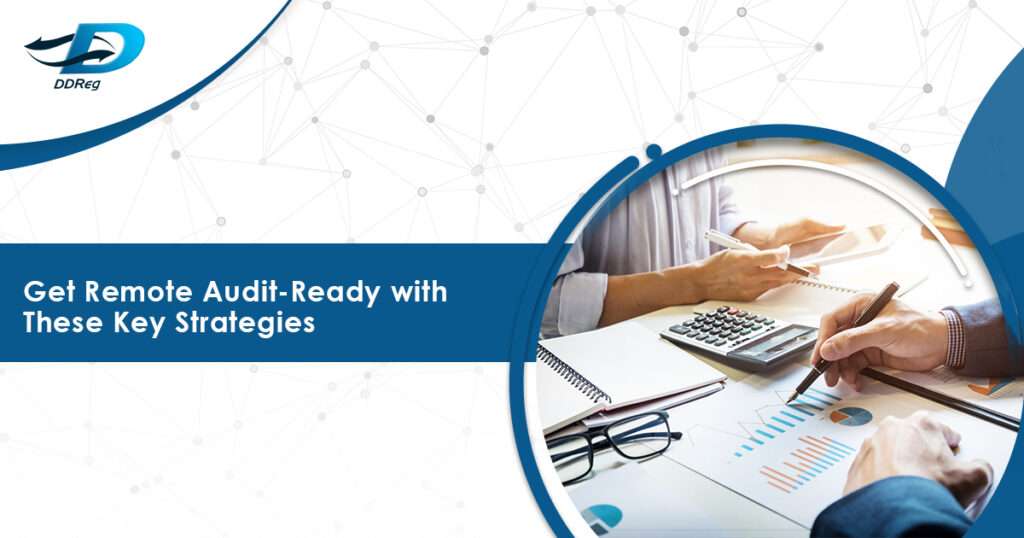
The COVID-19 pandemic catalyzed a shift in how regulatory authorities conduct inspections, accelerating the adoption of remote regulatory inspections (RRIs) as a pragmatic alternative to traditional onsite audits. While initially a contingency approach, RRIs have now evolved into a sustainable model widely accepted by health authorities such as the U.S. FDA, EMA, MHRA, and Health Canada providing flexibility and continuity in regulatory oversight. As remote inspections become an integral part of the compliance landscape, regulated organizations must proactively enhance their readiness to demonstrate compliance in a digital environment.
This article explores the key strategies and critical considerations for effectively preparing for and executing remote inspections in the current regulatory climate.
Remote Inspections
Between 2020 and 2023, the FDA conducted over 1,300 Remote Regulatory Assessments (RRAs), a mechanism allowing remote review of records without a formal inspection classification. Similarly, the EMA and national competent authorities within the EU have endorsed “distant assessments” for GMP, GDP, and pharmacovigilance (PV) compliance.
This shift is not merely temporary. According to EMA’s guidance, hybrid inspections are expected to continue post-pandemic, particularly for routine or follow-up inspections. As a result, companies must build inspection readiness not just for physical visits but also for virtual ones.
Key Strategies for Remote Inspection Readiness
- Build a Digital Inspection Management Framework
A strong digital framework is the foundation of remote inspection success. This includes:
- Centralized document management systems (e.g., eTMF, QMS, LIMS)
- Secure cloud-based platforms for real-time access to validated documents
- Audit trail-enabled tools ensuring traceability and version control
- Integrated SOPs covering remote interactions, screen-sharing, and digital document submission
Ensure that these systems are validated, role-based, and allow read-only access for inspectors.
- Pre-Inspection Readiness Planning
Remote inspections require proactive logistics:
- Conduct mock inspections to rehearse team responses
- Create an inspection response team with clearly defined roles
- Develop a live document tracker for request fulfillment
- Ensure high-speed connectivity, backup systems, and compliance with time zone alignment
- Embrace ALCOA+ Principles in Digital Form
Data integrity is paramount. Regulators expect the same ALCOA+ standards (Attributable, Legible, Contemporaneous, Original, Accurate + Complete, Consistent, Enduring, and Available) in electronic records. Tools must be capable of:
- Recording access logs
- Maintaining original metadata
- Preventing unauthorized edits or deletions
Failing to maintain ALCOA+ digitally can lead to 483 observations or non-compliance reports.
Comparing Global Remote Inspection Models
Authority | Approach | Technologies Used | Highlights |
FDA (USA) | Remote Regulatory Assessments (RRAs) | Secure portals, emails | Not considered formal inspections under FD&C Act |
EMA (EU) | Distant Assessments | Video, shared drives | Focus on hybrid GxP audits |
MHRA (UK) | Remote/Hybrid Inspections | Microsoft Teams | Continued use of hybrid models in 2024 |
PMDA (Japan) | Remote GCP/GMP inspections | Virtual tours | Pre-scheduled document reviews |
Health Canada | Remote Verification Activities | Virtual platforms | Growing acceptance of virtual tools |
Real-World Example
A mid-sized European contract manufacturer faced an EMA remote GMP inspection in 2022. By deploying a centralized SharePoint environment for document sharing, using validated smart glasses for real-time facility walkthroughs, and training a digital-first SME panel, the company cut document retrieval time by 40% and completed the audit without a single major finding.
Common Pitfalls to Avoid
- Using personal file-sharing accounts (e.g., Dropbox, Gmail)
- Sharing editable or unsigned versions of documents
- Lacking clear SOPs for screen-sharing or live interviews
- Ignoring time zone planning for global inspections
- Failing to pre-brief SMEs or rehearse responses
Remote Inspection Maturity Model
Organizations can assess their preparedness by evaluating their maturity stage:
- Reactive – Limited remote readiness, ad-hoc processes
- Defined – Basic SOPs, some tools in place
- Digitized – Standardized systems, digital workflows
- Integrated – Seamless tech stack integration across QA, RA, IT
- Predictive – AI-enabled search, automated alerts, digital twin audits
The Future of Inspections
As regulators adopt a “hybrid-by-default” model, companies must rethink inspection readiness as a strategic compliance capability. Remote inspections offer benefits beyond regulatory needs—they enable cross-border efficiency, reduce costs, and ensure continuous audit preparedness.
Investing in digital infrastructure, upskilling SMEs, and embedding remote readiness into the quality culture will position organizations for long-term success in a digitally regulated environment.
Conclusion
Preparing for remote regulatory inspections is not just about technology it’s about strategy, systems, and people. By aligning processes with global expectations, investing in robust digital tools, and building a culture of continuous inspection readiness, organizations can thrive in the new era of remote compliance.
How DDReg Can Help?
At DDReg, we help life sciences companies stay inspection-ready—on-site, remote, or hybrid. Whether you’re preparing for a GMP audit, a pharmacovigilance inspection, or an end-to-end regulatory assessment, our team of global regulatory experts and digital compliance specialists is here to support you.
Need a readiness gap analysis or mock remote inspection?
Contact us at info@ddregpharma.com or visit www.ddregpharma.com to learn how we can help your team implement robust, inspection-ready systems and processes.
Read more from us here: One Health Framework in Veterinary Medicine & Regulations
